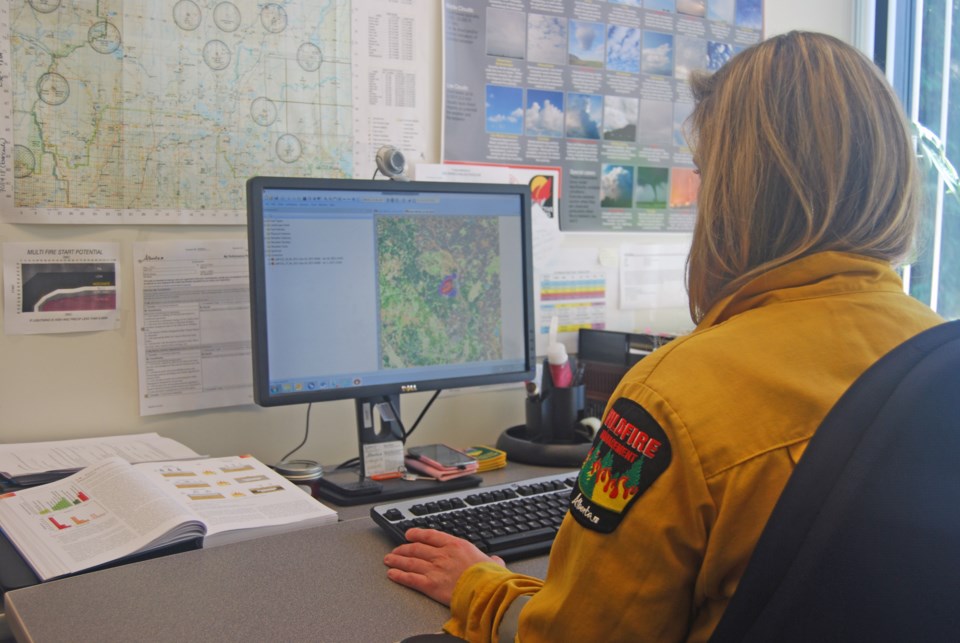Behind The Fire is a series of articles on provincial wildland firefighting in the Lac La Biche area.
Generally speaking, fire burns up instead of down- but what if there’ s just the right combination of low-lying fuels? Or what if the fire is on a gradual, south-facing slope?
What if the wind shifts and the whole plan has to be revisited?
Fortunately, there’ s a person at the Fire Centre in Lac La Biche who’ s job it is to understand all of that.
Wildfire management specialist Maria Sharpe is responsible for interpreting weather, fuel and terrain
details. How those three elements combine at the site of a wildfire greatly affects the fire’ s potential
for growth-and how crews need to respond to the blaze.
“We have a fire behaviour triangle, basically-weather, fuels and topography-so we have to have a really good understanding of those three things,” Sharpe said.
Every morning and afternoon, Sharpe and other Fire Centre staffers listen to a province-wide weather
report. Alberta Forestry employs a full-time meteorologist, who gives a broadstrokes, at-a-glance analysis of weather patterns across the province. Spot analyses for particular areas can also be requested.
Personnel at the lookout towers throughout the Lac La Biche region also record weather information and relay it to Sharpe, who sifts through all of the data.
Weather is only one factor in a wildfire’ s growth, though. Not all fire fuels are created equal-and which are present and which aren’ t can have a major impact on a fire’ s behaviour.
Sharpe has some help on that front. The wilderness has been surveyed, dominant vegetation patterns
have been identified and computer software converts all of that information into firefighting terminology.
“There’ s a computer program that translates that. Now it’ s not immature spruce-it’ s a C-2 fuel type and that means something to us,” said Sharpe.
The last point in the “fire behaviour triangle” is topography, or how Mother Nature has shaped the landscape.
The abundance of lakes in the Lac La Biche area, for example, can be both a good thing and a bad thing.
“We have lots of long lakes and that’ s good for our air tankers,” said Sharpe. “We also then have lake effects (on the weather), so we might have wind variations throughout our district.”
With weather analyses, fuel surveys and topography scans, using a program that’ s appropriately named Prometheus, Sharpe can project wildfire growth.
All of these details are compiled into reports, which Sharpe gives to the duty officers at the Fire Centre. The officers then decide how many of which resource will be deployed where.
Although the fire season has simmered down somewhat in recent weeks, earlier this year it was positively sizzling and Fire Centre officials had to think carefully about how to fight the numerous wildfires in the area.
“This summer, it was such a busy fire season that we were limited in resources and we really had to decide on priorities,” said Sharpe.


